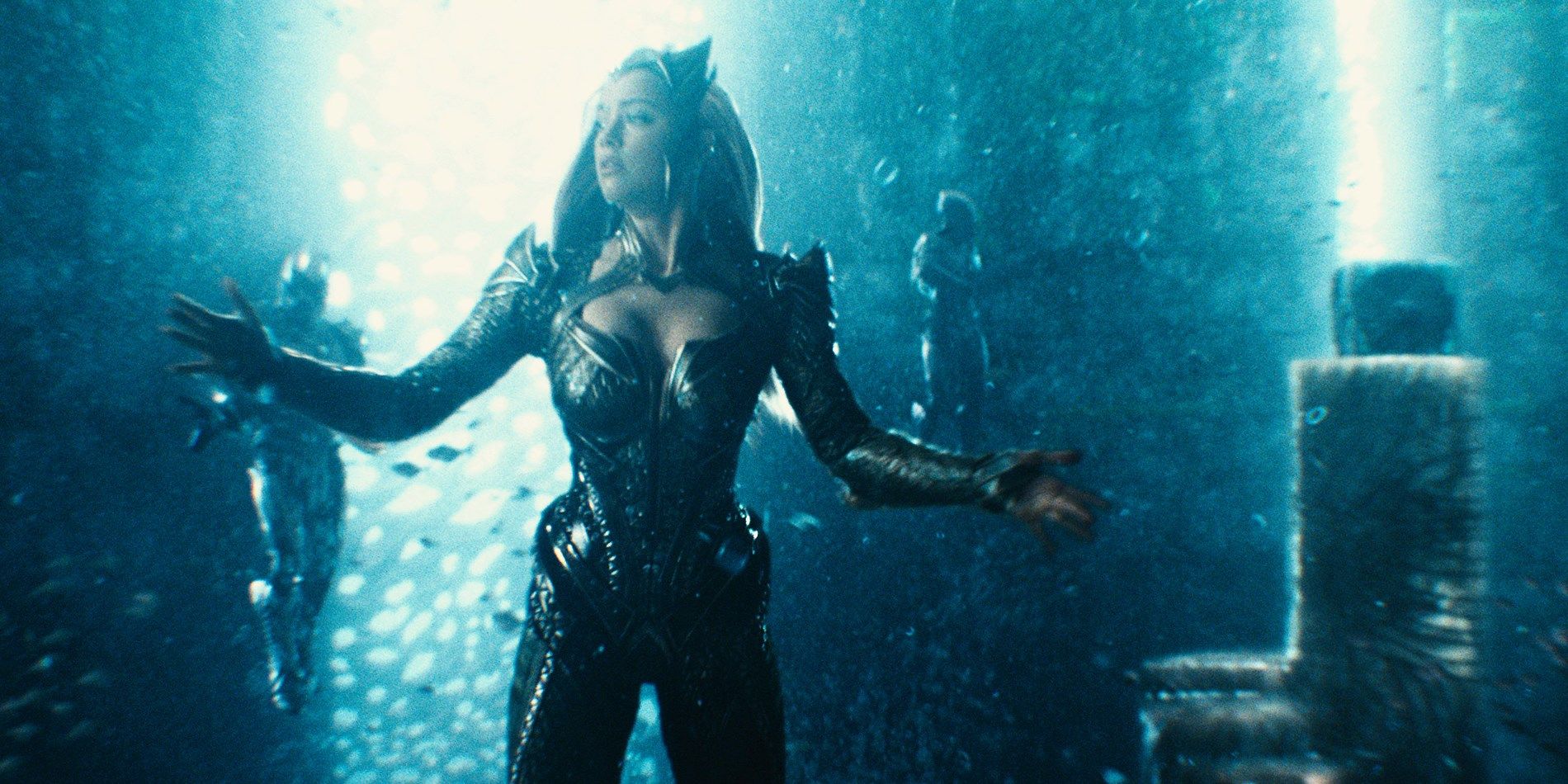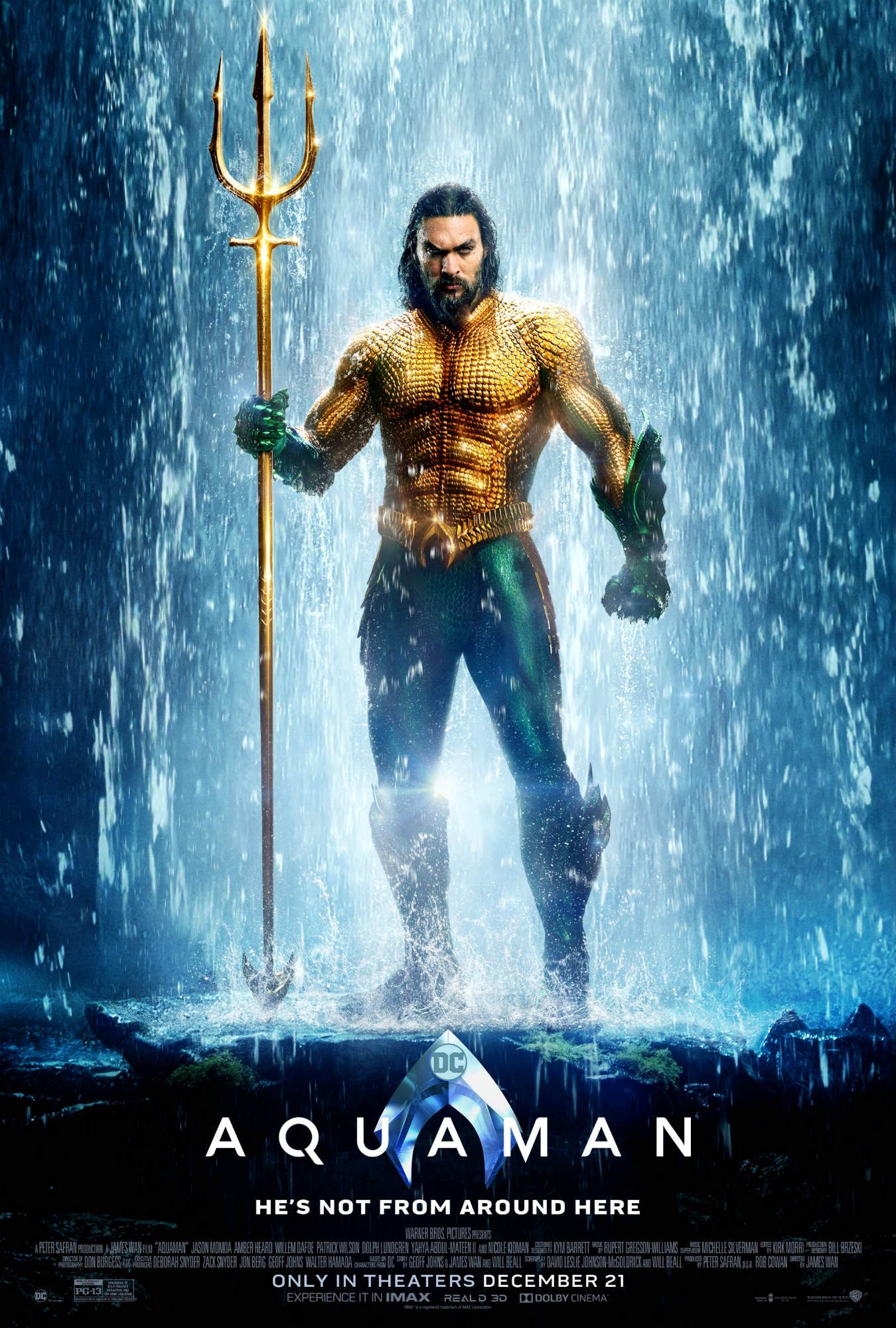If the way Justice League handled Aquaman's underwater scenes had you worried, you can relax. We've seen the changes for ourselves, and Aquaman fans will be relieved... but not in all the ways they might expect.
One would think that after the Justice League movie actually took audiences underwater to see Aquaman talk, swim, and fight, that there would be no more mystery surrounding the same challenge in his solo movie. But after Screen Rant was invited to the Aquaman editing bay to be walked through several sequences with director James Wan, the results speak for themselves. Aquaman's version of underwater dialogue, action, and movement is a bigger change from Justice League than we expected.
So for the fans eager to wrap their minds around the prospect of an Aquaman movie set mostly underwater, allow us to explain the differences.
- This Page: Justice League's Underwater 'Talk Bubbles' Are Gone
- Page 2: Aquaman's Fighting is Better and Worse Than Snyder's
How Justice League Solved Underwater Talking
In all honesty, most Justice League viewers would agree that saying the movie "solved" the challenge of talking underwater would be a stretch. At best, the film sidestepped it altogether. We may never know how the scene between Arthur and Mera (Amber Heard) would have played out had Zack Snyder remained in the director's seat through post-production, but the shortage of time and money to plug plot holes in Whedon's version won out. Instead of the movie giving some idea of how talking in water would differ from talking in air, the movie plopped both actors into a "conversation bubble" that confused the very nature and culture of Atlanteans.
RELATED: Aquaman Director Teases Underwater Action Scene
James Wan came out almost immediately to assure fans that this dodge wasn't a sign that the problem still hadn't been solved for his own film, promising that the Aquaman movie wouldn't have air bubbles to get around dialogue. And after seeing several scenes set in and around Atlantis, we can confirm that's the case.
How Aquaman Solves Underwater Talking
The Aquaman movie solves the problem in an unimpressive way, but the one that most fans would likely agree is the simplest. People talking underwater looks like... people talking anywhere else. Would Atlantean vocal chords produce a normal voice when vibrating through water, but shift up to a higher pitch when moved into the less dense medium of air? Science says yes, but the film isn't going to that level of authenticity (again, probably for the best). And from what we saw of Orm, Arthur, and Mera, there's no meaningful difference between their speech underwater and on dry land. Aside from the water-vomit added to Aquaman mythology, of course.
The movie has yet to pin down exactly how the raw physical strength of an Atlantean compares to a human being, but there were moments that appeared to show louder exclamations causing a ripple in the water. The line between immersion and distraction with that device could be difficult to find, however, so it seemed to be used sparingly. Aside from characters gently bobbing or drifting in relation to the camera, it would be possible to forget they were even underwater, during extended exchanges.
But without question, the most exciting use of the underwater world, and the tweaks made from Justice League are found when Aquaman stops talking, and starts fighting.
Page 2: Aquaman's Underwater Fighting is Better Than Justice League
How Justice League Did Underwater Action
There are sure to be many who left Justice League feeling that Atlantis and Aquaman's underwater sections hadn't quite been sold, or entirely resolved. But considering how little faith some had in the prospect of filming a superhero adventure underwater, the fight sequence between Mera, Arthur, and Steppenwolf proved a pleasant surprise. Especially when it came to the ways in which the Atlanteans showed their proficiency in using water to their advantage. Arthur, quickly contorting himself and leveraging his strength against Steppenwolf, and Mera, wielding the water itself as a weapon. Both of those tactics are carried over into Aquaman as well, even if Mera was only briefly seen using them in our preview.
RELATED: Amber Heard Promises Mera & Aquaman are Equals
The biggest difference between Justice League's use of motion and fight choreography as opposed to Aquaman's, however, is down to the way they move. and we don't mean that as a slight against the visual effects and stunt team of League either. They accomplished the task of making it seem as if Arthur, Mera, and the Atlantean guards actually were swimming underwater, attacking with weapons underwater, and being hammered into the surrounding structures underwater. The result was a shockingly real-looking representation of how Aquaman could be a hero beneath the surface of the oceans. But that's where things have perhaps most drastically changed for Aquaman.
How Aquaman Does Underwater Action
During our visit, we were shown what seems to be a majority of the showdown between Arthur and Orm (the crossing of tridents glimpsed in the trailers), which was ultimately an in-depth demonstration of now just how armed combat works in Aquaman's version of Atlantis, but how physics will and will not apply. For starters, as much as Jason Momoa may excitedly claim that Aquaman's underwater fights are like space battles, that doesn't mean that there is no sense of up or down. Atlantis used to be above sea level, and as a result, movement and architecture takes place with reverence to gravity, just as on dry land.
This could change in later scenes, placed outside of essentially a gladiatorial arena on the ocean floor, and intended to usher audiences into a new way of fighting. But bigger than the rules of the space are the rules of physics, which seem to be largely ignored when it comes to water slowing down either movement or attacks. Where Justice League depicted weapon strikes and punches at speeds slowed down through water resistance, the impact in Aquaman is minimal, if detectable at all.
Digital doubles of Jason Momoa, Patrick Wilson, and Amber Heard propel and maneuver with the ease of Superman and Zod in flight, and the only sign that tridents are being thrust through water is the obscuring ripples they leave behind (a terrific detail that sells the medium more than you might think). In the end, watching the two would-be kings wrestle across, below, and over the space grows more and more disconnected from our assumptions about what water would affect. That may be the goal, and an achievement of its own... but it's something fans will need to prepare for.
--
As we noted before, it was the reality of the water in Justice League that sold the idea of Aquaman as something new, interesting, and intriguing. Aquaman may do the same in scenes we didn't see during our visit - or Wan and his team determined that a full-length feature must serve different priorities than a single sequence. We don't doubt that the film will do more with the underwater setting than Zack Snyder in Justice League. But if it does it as differently as it seems to, fans may be surprised by which version they end up preferring.






